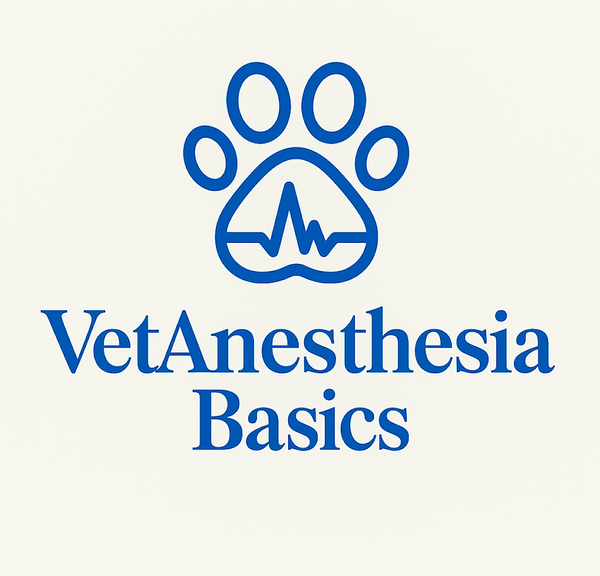About the Author
About the Author: Benjamin L. Pritzker
Education:
Rowan University Class of 2026
Biological Sciences Major | Chemistry Minor | Advanced Pre-Health Minor
Research:
Neuropharmacology in drug development for analgesia and neuropsychiatric conditions.
Keck Labs | Rowan University, Department of Biochemistry
Employment:
Lead Anesthesia and Surgery Technician, Califon Animal Hospital, NJ.
Internal Sales Representative, Suveto Veterinary Health, USA.
Benjamin L. Pritzker is a veterinary anesthesia technician, student, author, and lifelong animal enthusiast whose journey into veterinary medicine began not in a classroom, but in a barn. Growing up on a small family farm, Ben was immersed in animal husbandry from a young age. Horses, chickens, goats, and donkeys weren’t just part of the landscape—they were central to his daily life. By the age of nine, Ben was working in an exotic animal and fish store, often paid not in cash, but in live animals that fed his ever-expanding menagerie. His early years were marked by a relentless curiosity and an entrepreneurial spirit. He bred and sold rabbits, reptiles, and feeder animals before he turned fifteen, at one point operating a full-scale reptile breeding business out of a climate-controlled facility he and his father built together.
Ben’s fascination with animals evolved from care and breeding into clinical medicine after a formative externship at a dog and cat hospital in northern New Jersey. At just 14 years old, he witnessed the full spectrum of veterinary medicine, including surgery, diagnostics, and even euthanasia. This experience solidified his desire not just to care for animals, but to be there for them during their most vulnerable moments. It was the precision, compassion, and control of the operating room that captivated him, and it was in anesthesia that he found a true calling.
Over the years, Ben developed a keen academic interest in physiology, biochemistry, and pharmacology. His current research focuses on neuropharmacology and its applications in pain management, neurodegenerative disease, and addiction. These interests naturally intersect with veterinary anesthesia, where the understanding of complex drug mechanisms and physiologic interactions is essential for safe and effective patient care. Ben has trained in both general practice and specialty hospitals, working alongside board-certified anesthesiologists and veterinary technician specialists. These experiences shaped his clinical perspective and helped him develop the practical knowledge he now seeks to share with others.
As a veterinary anesthesia resident, Ben saw a recurring problem in general practice: the lack of accessible, practical resources for newcomers to the field. Veterinary anesthesia is complex, highly individualized, and often intimidating to those just beginning their careers. Recognizing this gap, Ben authored Beginner’s Guide to Small Animal Anesthesia, Sedation, & Analgesia in General Practice to make high-quality anesthetic knowledge approachable without sacrificing scientific integrity. His book blends foundational theory with clinical application, aiming to empower veterinary students, nurses, technicians, and assistants with the tools they need to safely manage anesthesia and analgesia in small animal practice.
The guide emphasizes real-world scenarios, multimodal pain management, and the ethical dimensions of veterinary care. Ben believes that good anesthesia is not just about rendering an animal unconscious, but about managing every physiologic system with precision and compassion. In his words, "Anesthesia is total control of every body system, every function, and the entire patient. The surgeon is responsible for a specific task, while the anesthetist is responsible for keeping the patient alive."
While Ben does not claim to be an expert, he is deeply invested in continual learning and mentorship. His work is informed by a strong academic foundation, hands-on experience, and the guidance of veterinary mentors who have helped shape his understanding of the field. He views his book not as a definitive text, but as a bridge—a tool to help others navigate the early stages of their careers with greater confidence and clarity.
Beyond the clinic, Ben is a passionate educator and advocate for accessible veterinary training. He understands firsthand how hard it is to start in an industry that demands competence from day one, yet often provides little structured support. This book is part of his effort to change that. It reflects the kind of resource he wished he had when he was first learning how to place an IV catheter, manage a gas machine, or formulate a safe anesthetic plan.
Today, Ben continues to refine his skills in anesthesiology while pursuing his DVM. His goal is to specialize in veterinary anesthesia and pain management, contributing to both clinical advancement and veterinary education. Through this book and his ongoing work, he hopes to make veterinary anesthesia not just more accessible, but more compassionate, ethical, and evidence-based for the next generation of veterinary professionals.
In every page of his writing and every patient he cares for, Ben carries forward the lessons of a childhood spent among animals: that curiosity, compassion, and care are the foundation of veterinary medicine.
